This walk on the Mairi path was not in a straight line for me. I began at temple 75, then, temple 74, temple 72, temple 73, and temple 71. Temple 76, Konzo-ji, is the next one on a logical path. Maybe I can finally go forward and not have to meticulously note my location. I certainly do not want to miss a temple and have to turn back. It could happen if I don’t pay attention. A few ohenro admitted doing just that!
So far, I’ve avoided that fate.
Let’s walk.
76 Konzo-ji
Temple of the Golden Storehouse
Konzo-ji is associated with Chisho Daishi, nephew of Kukai. He was an extraordinary child who became a great monk.
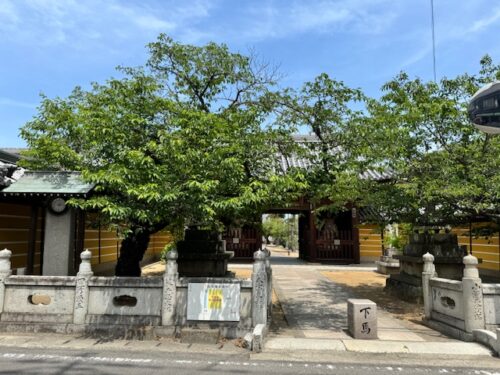
Right off of the street is a courtyard walkway leading to the Nioman gate at Konzo-ji.

The Nio guardians ward off evil spirits. However, they are actually friendly and welcome all visitors to Konzo-ji.
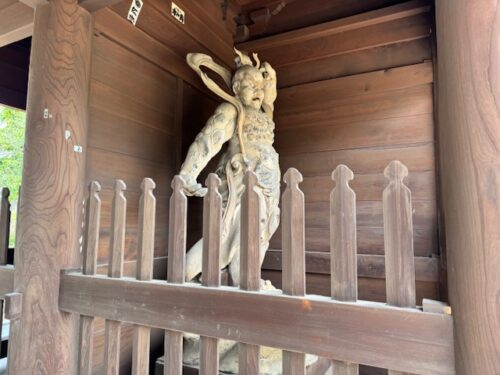

Giant straw sandals or owaraji occupy the other side of the gate.

Living together
A stone torii gate stands on Konzo-ji temple grounds. It marks the entrance into a sacred area.


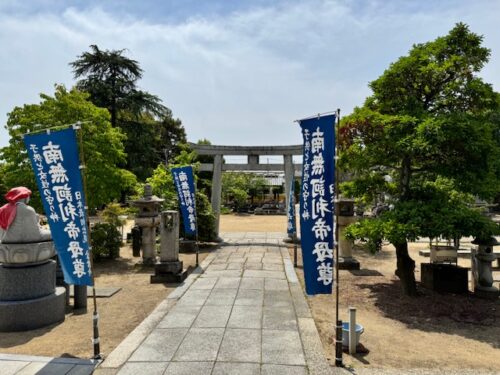
The history of violent clashes between the Shinto religion and Buddhism in Japan led to temples being burned or destroyed. Laws were passed in 1898 forbidding mixing the two beliefs anywhere in Japan. Buddhism’s hold on the Japanese people by that time, however, was so firmly entrenched that the laws were unsuccessful.
Neither faith cancelled the other out.
Both religions are practiced throughout the country. Shintoism and shrines go together. Likewise, Buddhism and temples do the same.
Shinto and Buddhist iconography, buildings, and practices co-exist here at Konzo-ji and many other temples in Japan.


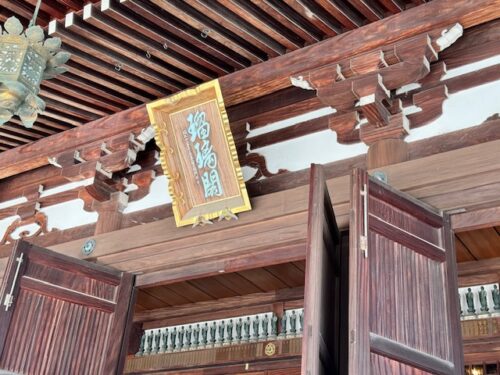
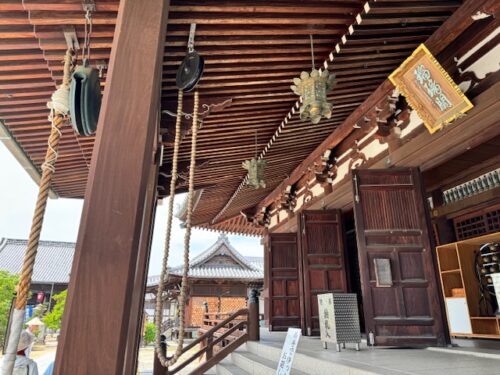
Details of the main temple hall entrance include the bell (left of the pillar) and “clacker” chain (right of the pillar). I think those are strung chestnut shells.
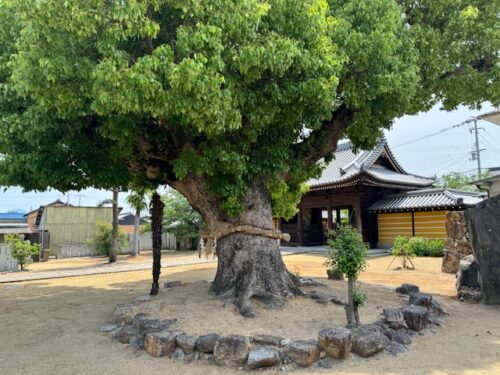
Something else that is sacred: this tree tied with a rope or shimenawa. It is used to attract and hold spirits that live there. Cutting down the tree would bring misfortune.
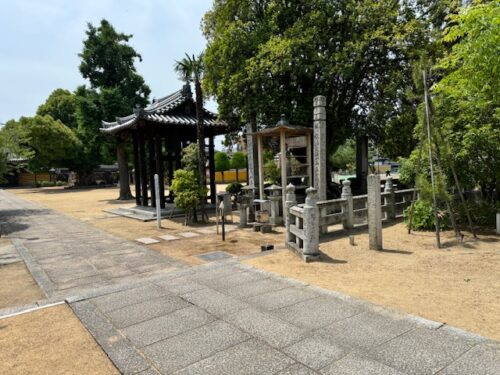
Walkway leading to Konzo-ji bell tower.

This bell tower has more than 4 legs, signifying its special status.

Close up of the bell tower.

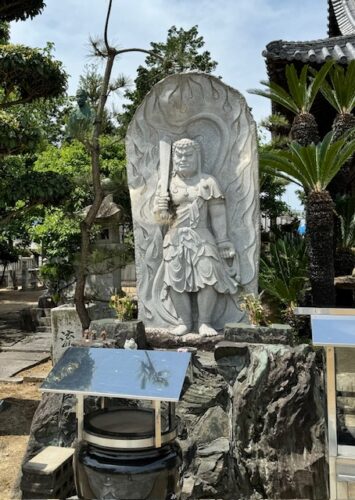
Mr Fodo. He “helps” Buddhists reinforce their faith.
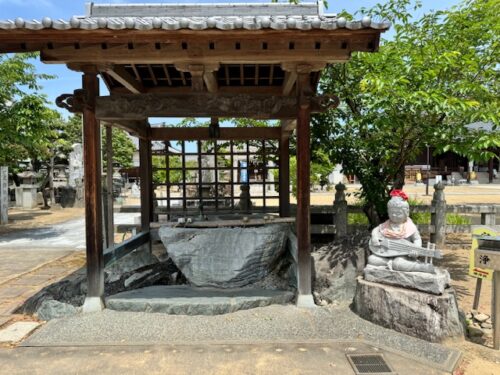
Konzo-ji temple fountain.

Daishi hall. These halls at Buddhist temples on the pilgrimage are dedicated to Kukai or Kobo Daishi, as he is known posthumously.

Front of Daishi hall.
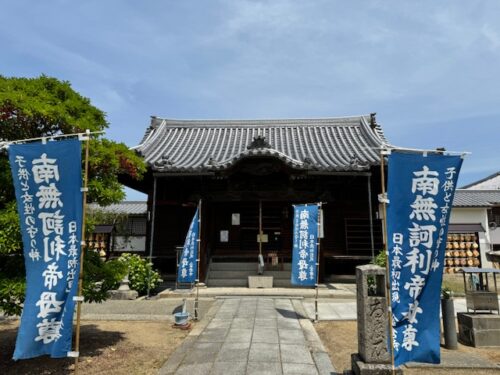
Kariteimodo Hall.
This hall is based on a legend which tells of how young Chisho Daishi was protected by a heavenly maiden, Kariteimo, during his studies to become a Buddhist monk.
Now, she is regarded as a protecter of all children including the unborn.
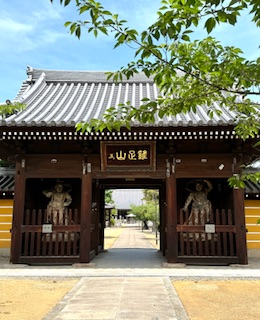
I’m back at the Konzo-ji main gate and walking on to the next temple.

👣
77 Doryu-Ji
Temple Of The Path Rising Up

As visitors pass through a temple gate, they are greeted by a line of over 250 bronze statues of the bodhisattva Kannon, Avalokitesvara.
A compassionate bodhisattva, Avalokiteśvara, hears the cries of sentient beings and who works tirelessly to help those who call upon her name.
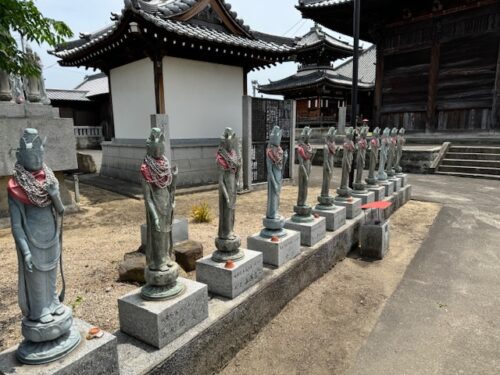


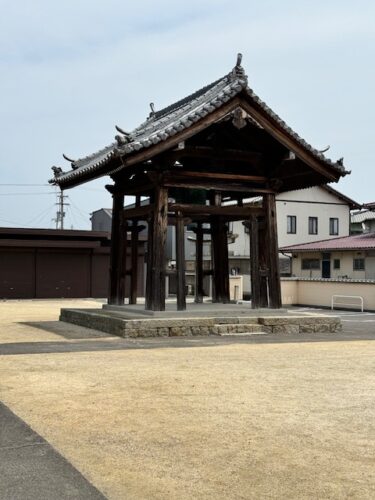
Bell tower.

Main hall.
Behind the main hall is the tomb of Kyogoku Samazo, a doctor from the late Edo period (1603-1868).
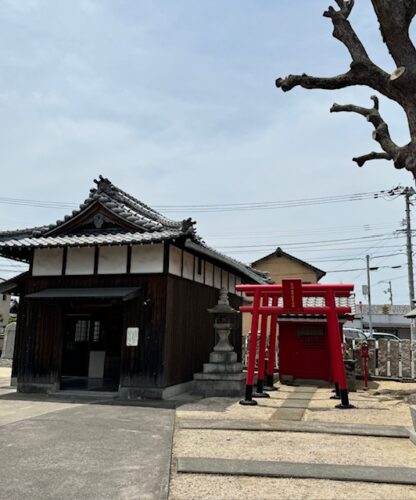
Prayer here has power for curing eye diseases.
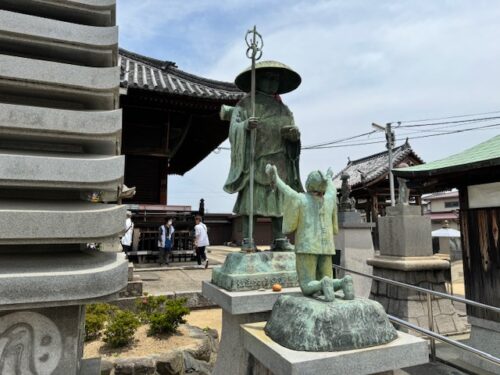
In front of the Daishido Hall there is a statue of Emon Saburo, kneeling before Kobo Daishi and repenting for his sins.
Saburo was Shikoku’s richest man who refused to offer alms to a wandering beggar. Soon after, all eight of his sons died before he realized it was Kukai who he turned away. As a result, Saburo walked the pilgrimage forward many times, then backward, before falling ill on the path. Before he died, he asked Kukai to allow him to be reborn so he might restore a neglected temple.

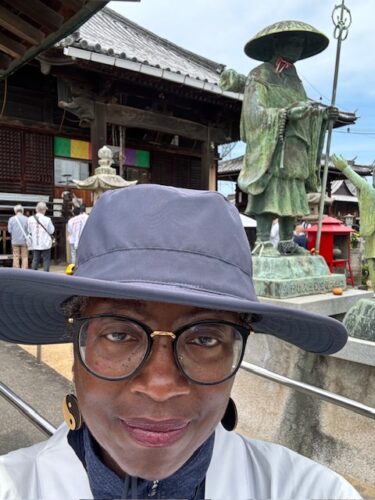
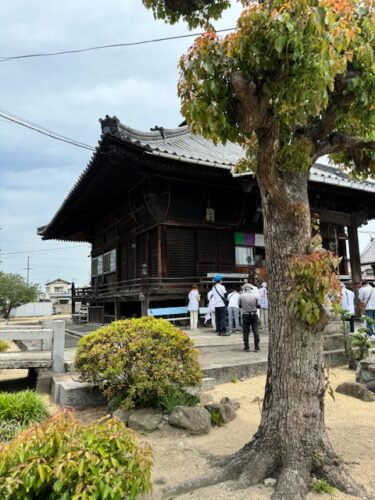
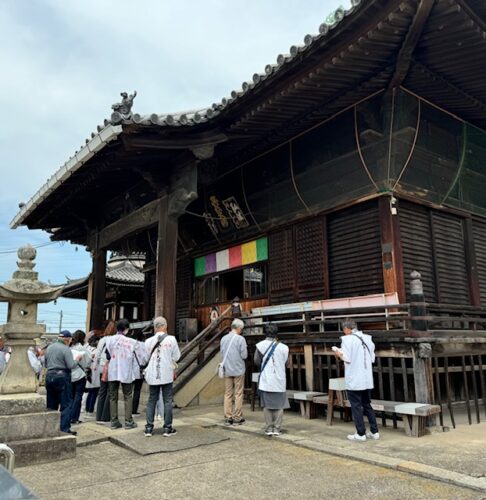


Closer view of the Daishi hall.

Daishi hall.

Tahodo hall.
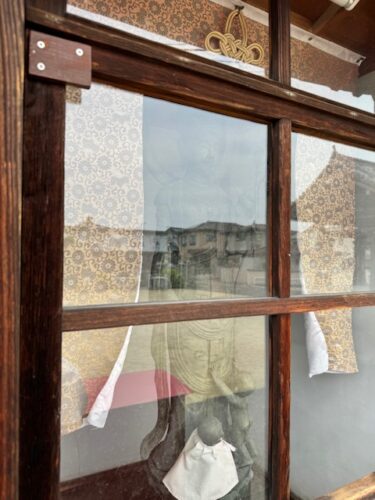
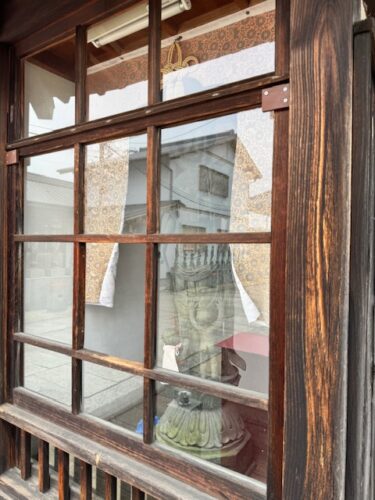
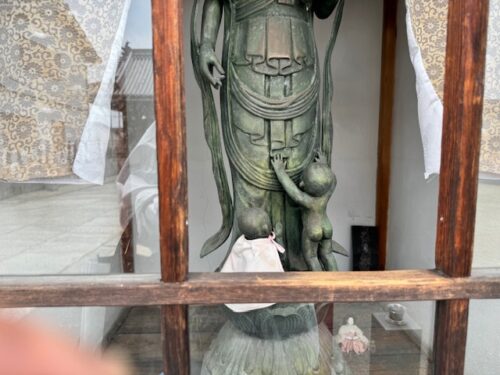
Kannon of compassion.
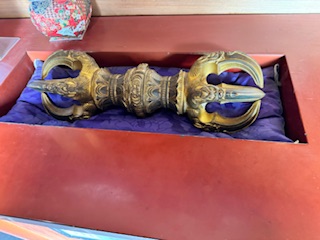
Vajra is a symbol of power, indestructibility, and perfect stability in Buddhism. According to Indian mythology, the vajra is carried by the god Indra.
In many of the stories about Kukai, the vajra was thrown across the sea or ocean. It would land at a location that was the perfect place for a temple or other sacred place.
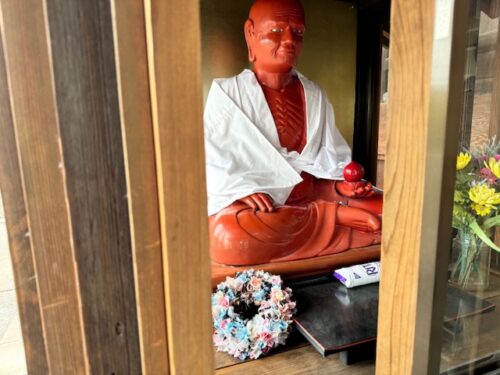
Red Buddha.
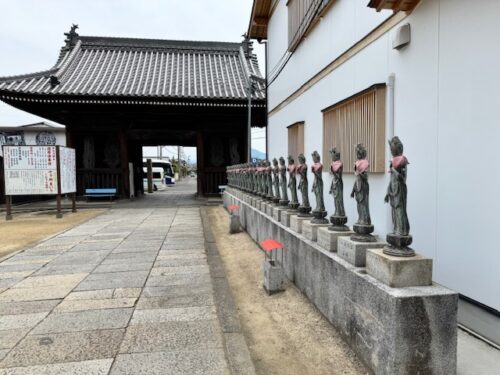
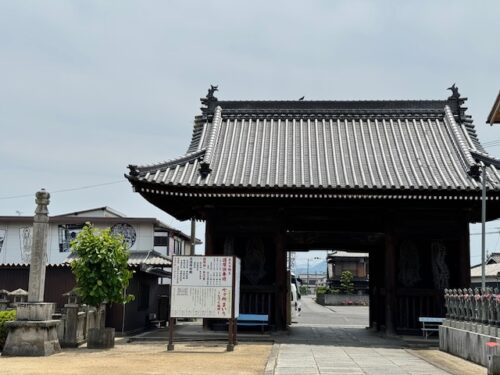
Bike central

I passed this on the way to the next temple:
Bikes are a major part of Japanese culture. Whether a school, business, hospital, or train station, space is provided for bikes and motorcycles.
Oh yes, see you next time!
Baadaye and Mata Ne (またね)
Shirley J ♥️
This and several posts this summer will chronicle my pilgrimage in Japan where I am walking the 1200 kilometer-long Shikoku 88 temple pilgrimage. Read my announcement here.

T76-77
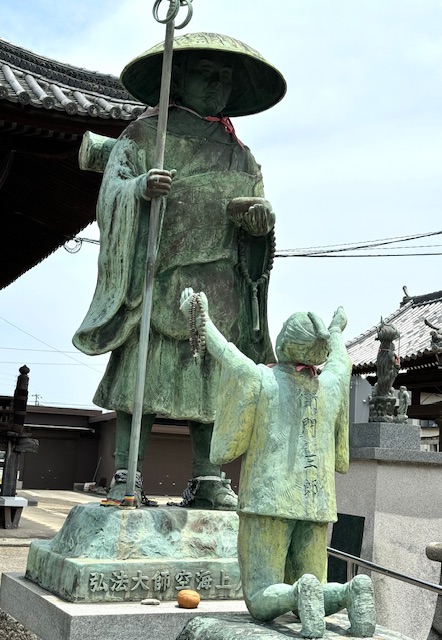
2 thoughts on “🌸 Noire Henro-san: Side by Side”
It’s getting close to the end. Are you looking forward to finishing, or trying to stay in the moment?
Both. I try not to see it now as a race to the end of my pilgrimage. Each day my wish is to not stray too far into tomorrow or the next day. Strangely, I am slowing down because I don’t want to feel sadness for finding or not finding what I was seeking. 🕉️
Comments are closed.